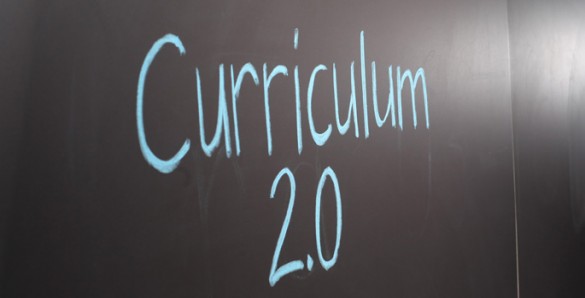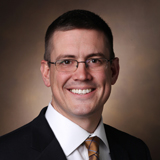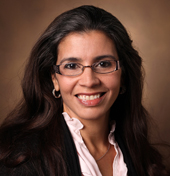 With initial implementation of Curriculum 2.0 well underway, Vanderbilt University School of Medicine (VUSM) is focusing on plans for the Immersion Phase, which comprises the final two years of the program.
With initial implementation of Curriculum 2.0 well underway, Vanderbilt University School of Medicine (VUSM) is focusing on plans for the Immersion Phase, which comprises the final two years of the program.
The goal of the Immersion Phase is threefold, said Bonnie Miller, M.D., senior associate dean for Health Sciences Education at VUSM: to advance essential knowledge and skills in clinical settings most meaningful to individual students; to create expert workplace learners; and to prepare students for residency.
“One of the most important things for students to accomplish in the Immersion Phase is to develop the skills needed for continuous learning in the context of very busy clinical environments,” said Miller. “This involves identifying personal learning gaps, formulating precise and pertinent patient-centered questions and seeking answers through the information resources available in the workplace.
“But it also involves opportunities for students to step back from the workplace in order to deeply explore the fundamental basic and social sciences underlying their patients’ problems.
“Finally, we want students to be able to explore different specialties, and, with a high level of comfort and confidence, know they made the right choice and that they are extremely well prepared to begin training.”
Immersion courses will incorporate teaching of the scientific, ethical, legal and social dimensions of medicine in the clinical care setting. During a portion of the Immersion Phase students will participate in a three- to six-month mentored research experience that will be tailored to each student’s research and clinical interests.
Immersion courses have already been piloted and a full menu will be ready by January 2015.
Miller credits Kim Lomis, M.D., associate dean for Undergraduate Medical Education, with the task of figuring out the best balance between student interest and the school’s need to ensure students meet standardized outcomes and expectations.
“The idea of spreading learning throughout a student’s medical school experience by intertwining what students are taught in the classroom and what they gain during interaction with patients is the crux of the Immersion Phase,” said Lomis, who spearheaded the initial work on developing this latest phase of experiential learning with team members Matt Weinger, M.D., professor of Anesthesiology, Biomedical Informatics and Medical Education and Administration, David Bader, Ph.D., professor of Medicine and Cell and Developmental Biology, and Piotr Pilarski, M.D., resident L-2.
“In the past there was so much volume over the course of the first couple of years that students were not always grasping the fundamental concept,” Lomis said. “It became a forest for the trees issue. Now during the first year we try to minimize the amount of volume and we have opted to layer on more and more detail and depth each year.
“Students are telling us that they are able to solidify the knowledge that they are being exposed to because of the manner in which we are incorporating it. They have the clinical context and it takes them to a deeper level of understanding.”
Building a diverse menu of courses and determining the right mixture for each student is the next challenge.

Two faculty members have been appointed to lead the way in further developing and implanting the Immersion Phase courses and structure.
Matt McEvoy, M.D., associate professor and vice-chair for Education in the Department of Anesthesiology, and Lourdes Estrada, Ph.D., assistant professor of Cancer Biology, will serve as co-directors for the Immersion Phase of Curriculum 2.0.
The interdisciplinary appointments are an example of the importance of having an integrative approach to teaching and learning.

McEvoy and Estrada have been charged with further expanding offerings of the Immersion Phase to incorporate the various needs of the students.
“The challenge of bringing all the components of the curriculum together in a cohesive fashion while growing the vision of this integrative course work is exciting,” said Estrada. “The goal is to give the students a large number of options so that they can personalize and individualize their courses. We want them to be able to reach their goals and become the leaders they want to be and are meant to be. I really believe in this process and I am excited to see where the students will take it.”
The Immersion Phase is basically a deeper level of learning with the student’s interest and fields of study on the forefront, said McEvoy. It involves individualization, student engagement, planned redundancy between the foundational and clinical sciences and exposure to broader societal concerns in order to foster greater learning.
For example, said McEvoy, cardiovascular disease is one of the Immersion Phase courses. Students will return to the basic anatomy and physiology courses but one student might delve into a pediatric cardiac disease tract involving congenital heart disease while another may focus on heart failure in the geriatric population.
The goal of the course is to have core foundational science topics that broadly apply to clinical specialties.
“Our over-arching goal is to create an expert workplace learner,” said McEvoy. “We are moving into a phase of learning where students are breaking out of the silo model that in the past kept the basic sciences separate from the clinical sciences.
“This vision allows us to break across those barriers to provide robust learning experiences in domains that really interest the students and prepare them to be physicians and leaders of tomorrow,” he said.












